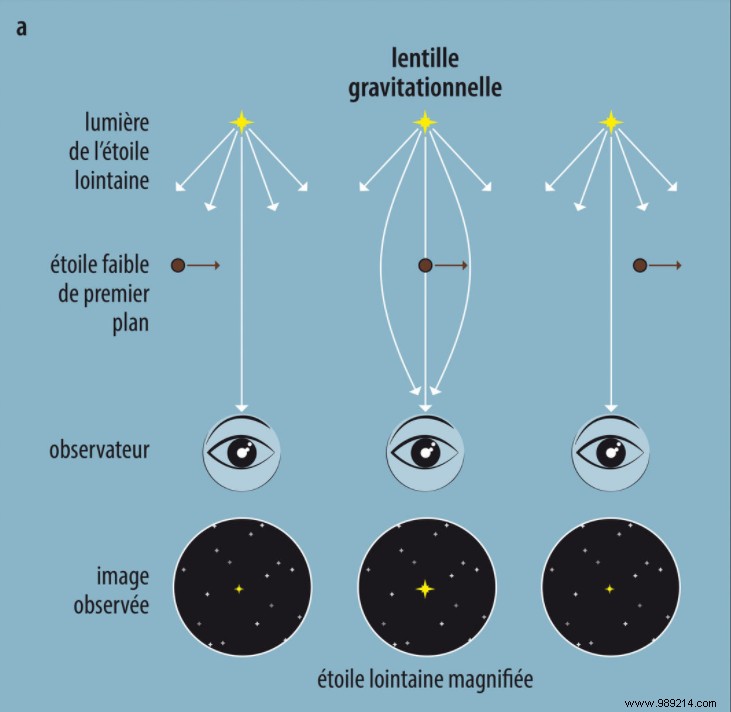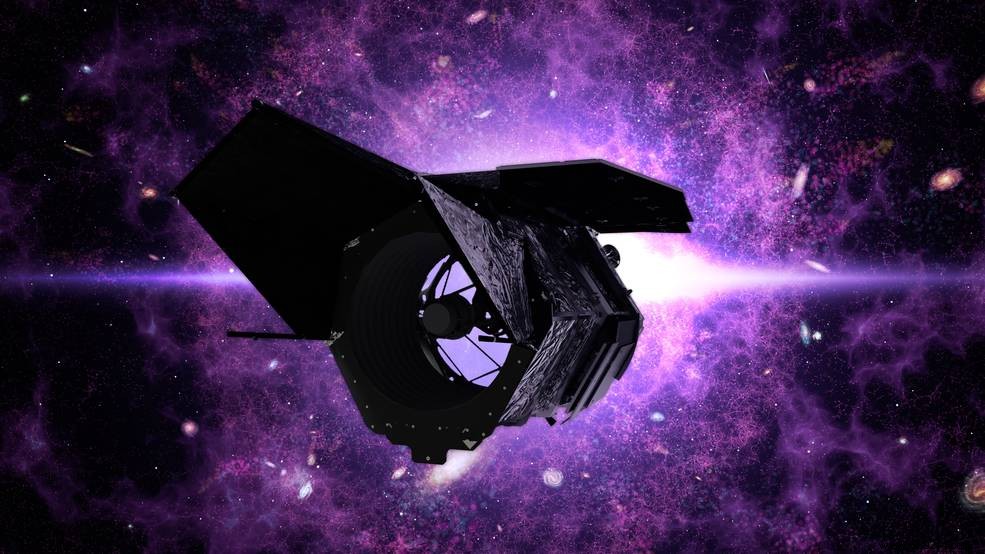NASA's Roman space telescope will help us better understand the evolution of our Universe, but that's not all. Researchers also want to build on it to unearth tens of thousands of new planets.
The Nancy Grace Roman Telescope (formerly WFIRST) is, along with the James Webb Telescope, one of the most anticipated observatories. Its wide field of view will allow astronomers to better understand the mysteries of dark matter or dark energy, but the mission is also expected to unearth thousands of new planets. To do this, the telescope will rely on two methods:that of the transit and that of the microlens.
The transit method consists of measuring the curve of light emitted by the stars. Periodic dips in luminosity are then sometimes observed, often betraying the passage of exoplanets passing in front of the star relative to the observer. These changes are characterized by very small but regular dips, for fixed periods of time.
The transit approach to finding exoplanets has proven to be effective with Kepler (retired) or TESS (still active) missions. Of the more than 4,000 extra-solar planets confirmed to date, more than half have been detected using this method.
The mission's large field of view, resolution, and incredible stability will provide a unique viewing platform for unearthing other worlds via the microlensing technique.
Gravitational microlensing, roughly speaking, is a smaller version of gravitational lensing.
This happens when a foreground star, the lens, aligns with a background star from our vantage point. The light from the background star will then be bent, split and amplified by the gravitational field of the first. Depending on how the light behaves, astronomers can then determine the presence of one or more planets, if they consider that the star alone cannot be responsible for the observed effect.
“Microlensing events are rare and happen quickly, so you need to look at many stars repeatedly and accurately measure changes in brightness to detect them” , underlines the astrophysicist Benjamin Montet, of the University of New South Wales in Sydney.

These two methods complement each other. On the one hand, that of transit works better with planets close to their star. For its part, that of the microlens can detect planets orbiting far from their host stars.
Furthermore, this method could also allow us to come across "wandering" planets, which are not gravitationally bound to any star. Thousands of these worlds could wander alone in our Galaxy.
In total, Benjamin and his team estimate that Roman could detect the presence of more than 100,000 new planets .
About three-quarters of these worlds should be gas giants like Jupiter and Saturn, or ice giants like Uranus and Neptune. The others will likely be planets four to eight times more massive than Earth, called mini-Neptunes. These objects are interesting in that they have no equal in our solar system.
Roman will also scan stars much further away than its predecessors. Kepler's original survey, for example, monitored stars at an average distance of around 2,000 light-years, while TESS focuses on nearby stars located within 200 light-years. Roman will be able to project his gaze more than 25,000 light-years away.
In addition, this telescope will also offer an instrument capable of directly imaging nearby exoplanets by blocking the light from their star thanks to a much more sensitive coronagraph than that of Hubble. Jason Rhodes, one of the researchers on the project, estimates that it may be able to reduce incoming starlight by a factor of a billion.

Waiting for its launch, the construction of the telescope continues. A few months ago, NASA said it had completed construction of its 2.4-meter-diameter main mirror. Lined with a layer of silver less than 400 nanometers thick – about 200 times thinner than a human hair – it will be able to reflect near infrared light.
For the time being, the telescope is still scheduled to be placed in orbit in 2025 to be placed 1.5 million km from Earth, in the opposite direction under the sun. Its primary mission should last about five years.